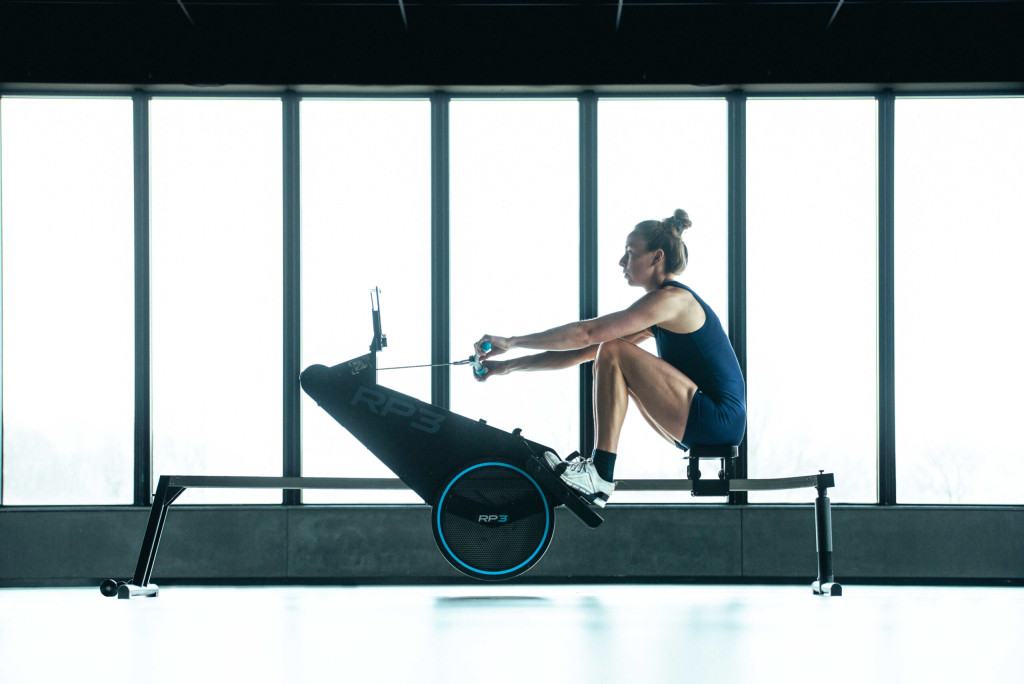Best low-impact cardio options for home
Discover 5 effective low-impact cardio options for home workouts that protect your joints while boosting fitness. Transform your health journey with these sustainable exercises for
Rowing machines can provide effective support for back pain and injury recovery when used properly. The flowing, controlled motion of rowing strengthens core muscles that support the spine while providing low-impact exercise that doesn’t stress the joints. Dynamic rowing machines are particularly beneficial as they more closely mimic natural rowing movements, distributing force more evenly through the body and reducing strain on the lower back. However, proper technique is essential—incorrect form can exacerbate existing back problems. When used as part of a carefully designed exercise regimen, rowing machines offer a balanced workout that can strengthen the muscles supporting the back while improving overall fitness.
Rowing engages multiple muscle groups simultaneously, creating a comprehensive workout that strengthens both the anterior and posterior chain muscles. The rowing stroke activates your core muscles, including the deep stabilizers that support your spine, while also working your back, shoulders, and legs in a coordinated sequence. Proper technique is fundamental to maintaining back health while rowing—the movement should flow from legs to hips to arms during the drive phase, with power generated primarily from the legs rather than pulling with the back.
When performed correctly, rowing provides a unique combination of strength training and cardiovascular exercise that can actually support back health. The controlled nature of the movement allows for gradual strength development without the jarring impact found in many other activities. This makes rowing particularly valuable for those looking to build supporting musculature around the spine without risking further injury.
The dynamic nature of rowing also promotes flexibility and mobility throughout the spine, which can help address the stiffness often associated with back discomfort. As we explore the relationship between rowing and back health, we’ll examine how this exercise can be both therapeutic and preventative when approached with proper knowledge and technique.
Yes, rowing machines can help reduce certain types of back pain by strengthening the core and back muscles that support the spine. Regular rowing builds the erector spinae, latissimus dorsi, and deep core stabilizers—all critical muscles for maintaining proper posture and spinal alignment throughout daily activities. This improved muscular support can relieve pressure on the spine and reduce pain caused by poor posture or muscular weakness.
The controlled, fluid motion of rowing also promotes increased blood flow to the muscles surrounding the spine, which can accelerate healing and reduce inflammation in some cases. Many people find that the rhythmic nature of rowing creates a gentle mobilization of the spine that helps alleviate stiffness and tightness that contribute to discomfort.
Additionally, rowing on a dynamic machine allows for natural body movement that more closely mimics the biomechanics of rowing on water. This natural motion distributes force more evenly throughout the body rather than concentrating it in the lower back, as can happen with static machines. The result is often a reduction in back pain for those who switch to dynamic rowing systems.
It’s important to note that results vary depending on the cause and type of back pain. While many users experience significant improvement, rowing should be introduced gradually and with proper technique to ensure it helps rather than hinders recovery.
The rowing motion provides a distinctive combination of strength and mobility work for your back in a way few other exercises can match. Unlike high-impact activities such as running or jumping, rowing involves no jarring movements that compress the spine. Instead, it offers controlled resistance through a full range of motion—from the extended reach of the catch position to the slight lean at the finish.
What truly sets rowing apart, particularly on dynamic machines, is the way force is distributed throughout the kinetic chain. While exercises like deadlifts concentrate force in specific areas, rowing spreads the load across multiple joints and muscle groups. This distribution reduces the risk of overloading any single structure in the back.
Dynamic rowing machines add another dimension by allowing both the seat and the resistance mechanism to move. This creates a more natural experience where your body remains relatively stable while the “boat” (machine) moves beneath you—just as in actual on-water rowing. This stands in contrast to static machines where your body weight moves back and forth, creating greater stress on the lower back with each stroke.
The rowing stroke also uniquely trains both the concentric and eccentric phases of muscle contraction in your back muscles, building strength through the full range of motion. This balanced approach helps correct muscular imbalances that often contribute to back pain, whereas many other exercises may inadvertently reinforce these imbalances.
If you have existing back issues, starting with proper technique is absolutely essential. Before beginning any rowing regimen, consider working with a coach or physiotherapist to ensure your form is correct. The fundamental principle to remember is that power should come primarily from your legs, not your back—approximately 60% legs, 30% core and hips, and only 10% arms and upper body.
Start with short, low-intensity sessions of 5-10 minutes and gradually increase duration as your body adapts. Use a lower resistance setting initially to allow your muscles to adapt without undue strain. Pay particular attention to maintaining a straight back throughout the stroke; avoid rounding or arching at any point.
Consider these specific technique points to protect your back:
If you experience any increase in pain during or after rowing, stop immediately and consult with a healthcare professional. Remember that discomfort associated with normal muscle fatigue is different from pain that indicates potential injury. Learning to distinguish between these sensations is vital when exercising with back issues.
Rowing can be an excellent rehabilitation tool for certain types of injuries due to its low-impact, controlled nature. For those recovering from muscle strains or ligament sprains (not in the acute phase), rowing provides graduated resistance that can be precisely adjusted to match recovery needs—making it possible to begin rebuilding strength without overloading healing tissues.
The fluid motion of rowing promotes increased circulation to injured areas, which can accelerate healing by delivering nutrients and removing waste products. This controlled movement also helps maintain and improve range of motion without stressing the injured tissues beyond their capacity to adapt.
For those recovering from lower extremity injuries, rowing offers a way to maintain cardiovascular fitness without weight-bearing stress. The seated position removes pressure from the lower limbs while still allowing for an intense workout that maintains overall conditioning during recovery.
Dynamic rowing machines are particularly beneficial for rehabilitation as they reduce the stress on the lower back compared to static machines. This makes them suitable even for those recovering from mild disc issues or facet joint irritation, provided they have medical clearance and use proper technique.
It’s worth noting that rowing can help address the muscle imbalances that often contribute to injuries in the first place. By strengthening both the anterior and posterior chains in a coordinated fashion, rowing helps create balanced muscular development that can prevent future injuries.
You should avoid using a rowing machine if you’re experiencing acute back pain, particularly if it’s severe or accompanied by nerve symptoms such as shooting pain, numbness, or tingling in the limbs. These symptoms may indicate conditions like disc herniation or nerve compression that could be worsened by rowing, especially if performed with incorrect technique.
Specific conditions where rowing may be contraindicated include:
Even if your back pain is chronic rather than acute, you should consult with a healthcare provider before beginning a rowing program. They can assess whether rowing is appropriate for your specific condition and may recommend modifications or alternative exercises.
If you experience an increase in pain, new types of pain, or pain that persists more than 24 hours after rowing, these are signs to stop and reassess with a medical professional. Remember that while some muscle soreness is normal when beginning any exercise program, sharp or increasing pain is not.
Rowing can be a valuable tool for maintaining and improving back health when approached mindfully. The key to success lies in mastering proper technique, starting gradually, and listening to your body throughout the process. Correct form is non-negotiable—power should come primarily from your legs while maintaining a neutral spine position through all phases of the stroke.
Consistency is more important than intensity, especially when using rowing to address back issues. Regular, moderate sessions will typically yield better results than occasional intense workouts that may risk overloading recovering tissues. Complement your rowing with targeted core strengthening and flexibility exercises for optimal back support.
Choosing the right equipment makes a significant difference in back safety. Dynamic rowing machines, like our RP3 rowing models, are designed to provide an authentic rowing experience that more naturally distributes force throughout your body. This design philosophy comes from our commitment to creating equipment that not only improves performance but also reduces the risk of injury by working with your body’s natural biomechanics.
We understand that each person’s back health journey is unique. What works well for one individual may need modification for another. That’s why we’ve developed machines that can be adjusted to accommodate different needs and fitness levels, allowing for a truly personalized approach to using rowing as part of your science of rowing back health strategy.
If you’re interested in learning more about the benefits of rowing, reach out to our team of experts today.
Discover 5 effective low-impact cardio options for home workouts that protect your joints while boosting fitness. Transform your health journey with these sustainable exercises for
Discover 5 effective low-impact exercises that protect your back while maintaining fitness intensity. Learn proper form techniques to strengthen your spine without risking injury.
Discover 5 effective home workouts that build strength without stressing your joints. Learn fluid movement techniques for pain-free exercise that delivers results while protecting your
Discover effective low-impact fitness strategies that build strength and cardio health without damaging your joints. Learn sustainable workout techniques for long-term health and injury prevention.
Discover 5 effective full-body low-impact workouts perfect for beginners that protect your joints while building strength and fitness. Start your sustainable exercise journey today!
Discover how low-impact fitness creates sustainable health benefits without joint pain. Learn 5 full-body workouts that deliver results while preserving your body for decades of
Discover why low-impact workouts deliver powerful fitness results without joint damage. Learn 6 key benefits and find the perfect exercise for sustainable daily fitness that
Discover why low-impact training on recovery days accelerates muscle repair, prevents injuries, and boosts long-term fitness gains. Learn optimal activities and avoid common recovery mistakes.
Discover why rowing machines deliver a complete workout while protecting your joints. Engage 85% of your muscles with zero impact stress—perfect for fitness enthusiasts of
Discover effective low-impact exercises perfect for returning to fitness after breaks or injuries. Learn 5 joint-friendly workouts that rebuild strength while preventing setbacks on your
Discover how rowing uniquely engages 85% of your muscles while enhancing flexibility in one efficient workout. Build strength and mobility simultaneously without stressing your joints.
Discover 5 low-impact routines that challenge your entire body without stressing your joints. Build strength and burn calories while protecting your knees, hips, and spine.
Discover how consistent low-impact activity delivers powerful physical and mental benefits without joint stress. Build fitness, reduce stress, and improve mobility through sustainable daily movement
Discover why rowing machines offer the ultimate low-impact, full-body workout for home fitness. Get 85% muscle engagement with minimal joint stress—perfect for all ages and
Discover how low-impact exercise protects your joints while delivering powerful fitness results. Learn 5 joint-friendly workouts that maintain mobility and prevent pain as you age.
Discover how to build sustainable low-impact fitness habits that protect your joints while delivering exceptional results. Learn proven strategies for lifelong exercise consistency without pain.

We will send you a personal quote as soon as possible.
As soon as the quote is ready, you will receive a link by email to order directly.
